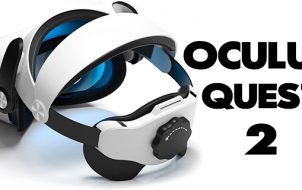Since the first prototype of the Oculus Rift series was introduced, VR has come a long way. Now users can enjoy a new way of playing games through virtual reality. When the Oculus Quest 2 headset was released, it quickly became the go-to choice for many gamers. Better still, there are many free games available for this pioneering VR headset.
If you have an Oculus Quest 2 and want to experience the best free gaming experience, read on. This article will review the top titles currently available.
VZFIT

VZFIT puts a whole new perspective on fitness. It differs from other fitness games because it integrates millions of miles of roads to explore through Google Maps. Whether you’d like to stay in your hometown or visit mountainous regions, VZFIT takes you on a wild ride while you engage in physical activity.
Here are some of the things you can do :
- Shoot
- Fly helicopters
- Race
- Cycle
- Stretch
It doesn’t get much better than that.
Creed: Rise to Glory

If you’re a boxing fan, you’re bound to be familiar with the Creed film franchise. Creed: Rise to Glory is a free gaming experience on the Oculus Quest 2 which combines different elements of gameplay. It allows you to relive moments from the Creed films in two user experiences: PvP and Campaign. While you can beat the Campaign mode relatively quickly, the PvP mode will give you hours of sweaty and exhilarating entertainment.
If you like boxing, this game is for you.
WIN Reality Baseball

If you’re a baseball fan, this VR experience will have you on the edge of your seat as you follow Paul Goldschmidt’s journey toward success. WIN Reality Baseball comes complete with gameplay that helps you practice hitting modes against real pitchers, seven game modes, and 30 training workouts.
Whether you’re a baseball fan or are training to go pro, this WIN Reality Baseball ticks all the right boxes.
LS Litesport

Up for a weightlifting challenge, or are you down with boxing? LS Litesport is the only VR-free game allowing you to use real-life dumbbells and weights to accomplish your fitness goals. You’ll be guided through 16 muscle groups with a virtual trainer. However, although this game is free, LS Litesport asks you to subscribe to get all the bonus features.
Do you want a full-body workout for free in the comfort of your own home? Try Litesport today.
Bogo

Bogo is a game for pet lovers and those new to the VR experience. Bogo helps you understand and familiarize yourself with the controls for Oculus Quest 2. It’s a casual game that allows you to care for, play, and look after a virtual pet.
While Bogo is a short gaming experience, it has many useful and enjoyable features.
Epic Roller Coasters

For the thrill-seeking adventurers of the world, enter Epic Rollercoasters. This game lets you ride themed rollercoasters:
- Haunted
- Shooter modes
- Race mode
- Magic
- Dinosaur
Unfortunately, some users have suffered from motion sickness playing the game. If you’re not one of the afflicted and want rollercoaster excitement in the comfort of your own home though, you can’t go wrong with this game.
Elixir

Elixir is a hands-on experience where you craft magical potions and care for the trainer’s dragons. In the immersive world of Quareia, you play a researcher exploring alien worlds and solving puzzles.
If you’re looking for a hands-on, immersive experience, Elixir will be right up your street.
Gun Raiders

Like Fortnite, Gun Raiders is a multiplayer shooting game where you defend your base and conquer your opponents. Fast-paced, with up to 100 levels of loot that you can use to upgrade your character, the game offers many modes:
- Chill – for slower-paced individuals
- Battle Royale – be the last one standing
- Assault – conquer the enemy base
- Control – fast-paced capture
- Arena – feel free to show off all your skills
If you love first-person shooters and crave the need for adrenaline, Gun Raiders is the game for you.
Onward

Speaking of first-person shooter games, Onward is the most realistic infantry combat game you can experience with friends or on your own. With its game modes, you can even explore the game with players worldwide. If you’re familiar with multiplayer combat games, Onward is a great choice.
Onward also offers cross-play with Rift and other PCVR versions.
Gorilla Tag

Gorilla Tag lets you tag other players as a gorilla. The goal of the game is to be the last one standing. With fully immersive gameplay, it allows you to run, jump, climb, and tag other players.
Gorilla Tag has four game modes:
- Simple Tag
- Infection Mode
- Hunt
- Paintbrawl
Gorilla Tag is made for those who like fast-paced games with many levels to explore.
Republique VR

Republique VR combines many features of storyline and quest games. You play as the character Hope by hacking into surveillance networks. You are guided across five episodes of thrilling dangers and obstacles. While it takes roughly two hours to complete, Republique VR takes you on an interactive journey where you fight, solve, and hack to the very end.
If you enjoy stealthy gameplay, simple puzzles, and hacking controls, Republique VR is a must-try.
Blaston

Do you like the fitness and shooter genre?
Dive into the world of Blaston, which challenges your fitness and engages your senses with shooting and dodging. As a fast-paced PvP combat game, you’ll need to move and exercise your whole body to dodge bullets and be the last one standing. If one thing is for sure with Blaston, you’ll never stand still if you don’t want to die.
If you’re competitive, active, and love shooter games, Blaston is just the game for you.
Population: One

Like other Battle Royale games, you’re dropped onto a portion of a map with two team members. From there, you must battle it out with six other teams until you’re the last group standing. With added updates, Population: One allows a new single-player mode. Throughout the game, you’ll fly, build, and climb to be the best.
Taking VR to the Next Level
Oculus Quest 2 and the VR experience have conquered the gaming world. Whether you want a fast-paced shooter game or a more casual experience, Oculus Quest 2 has got you covered. With so many free games to choose from, you won’t know where to start.
Have you ever played free games with Oculus 2? If so, which titles did you list best? Let us know in the comments section below.
Disclaimer: Some pages on this site may include an affiliate link. This does not effect our editorial in any way.







